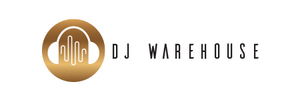With its analogue/digital crossover synthesiser, the Roland JD-XA, you can combine the warmth of analogue with the adaptability of digital systems in one incredibly imaginative instrument. First, there is an entirely analogue portion with analogue filters and a dry output. Next, there is a digital engine with a wide range of powerful effects and miraculous synthesis technology. You have a very flexible platform for sound creation, studio work, and live performances because the analogue and digital engines may both be used independently of one another or in conjunction with one another. For innovative sound design, you can combine analogue and digital engines, or you can shape digital waveforms with analogue filters to create sounds that have never been heard before.
The JD-XA has four analogue sections, including two oscillators, a filter section, an amp section, four selectable envelopes, and two LFOs that provide smooth coverage for oscillations ranging from slowly evolving to extremely quick. The JD-XA has eight oscillators, making it a truly analogue rendition of the iconic supersaw waveform. You can also utilise the poly-stack mode to create warm, organic four-note chords that will knock you off your feet. Once you've achieved the ideal sound, you can transmit it directly to the dry analogue output or, for more creative sound design, the onboard digital effects.
This synthesiser has a four-part, 64-voice digital sound engine that is powered by Roland's highly regarded Supernatural synthesis technology in addition to its traditional analogue sound capabilities. This technology enables you to be extremely expressive and is completely compatible with the INTEGRA-7 sound module's synth engine, a favourite of many producers and sound designers. If you want to access the most recent patches created by top programmers, you can visit Roland's Axial website if you need some additional motivation.
With its easy design and distinctive approach to synthesis, the JD-XA provides you two synths in one. You can use the engines separately or combine them together as you see fit. As a result, you may route digital sounds via analogue filters or use them as modulation sources for the cross modulation and ring modulation functions inside the analogue section. The analogue and digital engines can also interact with one another in a variety of additional ways. With the JD-adaptability XA's and versatility, you have a potent synthesiser that enables you to be quite creative.
- Keyboard: 49 keys (with velocity and channel aftertouch)
- User program memory: Internal - 256. USB Flash memory - 256. (The patterns of
- Arpeggio and Sequence are saved as programs)
- Pattern Sequencer: Tracks - 16
- Arpeggio: Preset pattern - 64
- Controllers: Pitch bend and modulation lever, Pitch and modulation wheels
- Display: 16 characters 2 line LCD
- External Storage: USB Flash memory
- Power Supply: AC Adaptor
- Current draw: 3,000 mA
- Width: 899 mm
- Depth: 388 mm
- Height: 111 mm
- Weight: 6.5 kg
Sound Generator Section
- Maximum Polyphony: Analog Part - 4 voices. Digital Part - 64 voices (varies according to the sound generator load)
Structure
- Analog Part: 4 parts (2 OSCs + AUX, 1 Filter, 1 AMP, 2 Pitch ENV, 1 Filter ENV, 1 AMP ENV, 2 LFOs and 1 MOD LFO)
- Digital Part: 4 parts (3 Partial (3 OSCs, 3 Filters, 3 AMPs, Envelops for each section and LFOs)) (Digital Part uses SuperNATURAL Synth tones that is compatible with the Integra-7.)
Analog-OSC Section
- Oscillator waveforms: Saw, Square, Pulse/PWM, Triangle, Sine
- Knobs/Sliders: Pitch, Fine, Cross Mod, Pulse Width, Pulse Width Modulation
- Pitch Envelopes: Attack, Decay, Envelope Depth
- Modulation: Cross Modulation, Ring Modulation, Oscillator Sync
(A-OSC2 is applied as modulation to A-OSC1.)
Analog-FILTER Section
- Filter Type: LPF1, LPF2, LPF3, HPF, BPF, Bypass
- Knobs: Cutoff, Resonance, Key Follow, Envelope Depth, HPF, Drive
- Envelope: Attack, Decay, Sustain, Release
Analog-AMP Section
- Knobs: Level
- Envelope: Attack, Decay, Sustain, Release
Digital-OSC Section
- Oscillator waveforms: Saw, Square, Pulse/PWM, Triangle, Sine, Variation
- Knobs/Sliders: Pitch, Fine, Pulse Width, Pulse Width Modulation
- Pitch Envelopes: Attack, Decay, Envelope Depth
- Modulation: Ring Modulation
(Partial2-OSC is applied as modulation to Partial1-OSC.)
Digital-FILTER Section
- Filter Type: LPF1, LPF2, LPF3, HPF, BPF, Variation, Bypass
- Knobs: Cutoff, Resonance, Key Follow, Envelope Depth, HPF
- Envelope: Attack, Decay, Sustain, Release
Digital-AMP Section
- Knobs: Level
- Envelope: Attack, Decay, Sustain, Release
LFO Section
- LFO Waveform: Triangle, Sine, Saw, Square, Sample&Hold, Random
- Knobs/Sliders: Rate, Fade Time, Pitch Depth, Filter Depth, Amp Depth
- Tempo Sync
Mixer Section
- Level: A-OSC 1, A-OSC 2, AUX
Microphone Section
- Vocoder
- MIC Modulation
Effects
- MFX: 8 systems, 67 types (each part has a MFX)
- Part EQ: 8 systems (each part has a Part EQ)
- TFX: 2 systems, 29 types
- DELAY
- REVERB: 6 types
- Master EQ
- Mic Input Reverb: 8 types
Connectors
- PHONES jack: Stereo 1/4-inch phone type
- MAIN OUTPUT jacks (L/MONO, R): 1/4-inch TRS phone type
- ANALOG DRY OUTPUT jack: 1/4-inch phone type
- CLICK OUTPUT jack: Stereo 1/4-inch phone type
- MIC jack: Combo type (XLR, 1/4-inch TRS phone), balanced
- FOOT PEDAL jacks (CTRL 1, CTRL 2, HOLD)
- CV/GATE OUTPUT jacks (2 systems): Miniature phone type
(CV: These jacks support OCT/V (Hz/V is not supported). - GATE: They output +5 V.)
- MIDI connectors (IN, OUT)
- USB COMPUTER port (USB Hi-Speed AUDIO/MIDI): USB B type
(Use a USB cable and a computer with a USB port that support USB 2.0 Hi-Speed.) - USB MEMORY port: USB A type
- DC IN jack






